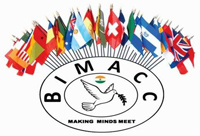
A COMPARATIVE ANALYSIS BETWEEN AD-HOC ARBITRATION AND INSTITUTIONAL ARBITRATION IN INDIA
1. Introduction
Arbitration is defined as a procedure in which a dispute is submitted by agreement of the parties to arbitrators who in turn make a decision on the dispute.[1] When put in contrast with the traditional judicial proceedings an arbitration proceeding is usually not as formal and expensive as the latter and offers a speedy and flexible method of resolving the dispute concerning the mutual rights and liabilities of the parties.[2] Categorised on the basis of procedures and rules, the types of arbitration practiced in India are Institutional Arbitration and Ad-hoc Arbitration.
Ad-Hoc arbitration is an arbitration proceeding where the procedure of the proceeding is either agreed upon by the parties or is laid down by the Arbitration Tribunal. Such an arbitration proceeding is characterised by absence of an Arbitral Institution and operates at the discretion of the parties. Parties, in Ad-Hoc Arbitrations are involved in the selection of Arbitrators, for implementation of rules, applicable law, procedures and administrative support.[3]
Additionally, since parties only have to pay for the fees of their counsel and arbitrator(s), they do not have bear the expense of paying to an institution; thereby significantly cutting down the expenses borne by the parties. However, it is pertinent to observe that the flexibility offered by ad-hoc arbitration may lead to abuse as parties may not have the expertise to appoint an appropriately experienced arbitrator; thereby making room for miscalculated awards. These miscalculated awards could subsequently necessitate the need for courts to intervene in the proceedings, which would not only negate the cost advantage of cost arbitration, but also the parties’ intention to resolve the dispute via arbitration.[4]
Institutional arbitration, on the other hand is referred to an arbitration in which a specialised institution with a permanent character is appointed in order to administer an arbitration proceeding. These institutions have their own set of rules and procedures to conduct arbitrations and a stipulated list of qualified arbitrators, from which the parties can choose and appoint an arbitrator. The availability of fixed rules and regulations facilitates the administration of the proceeding in a timely and structured manner. It saves the parties and their respective counsels the time and effort of determining the arbitration procedure, which is provided by the institution itself. [5]
The primary advantage of institutional arbitration concerns the appointment of arbitrators. The appointment process involves selection of an expert arbitrator from a panel of arbitrators from around the world possessing requisite experience to resolve the dispute efficaciously. In ad-hoc arbitration, since the arbitrator is solely appointed based on the parties’ mutual faith, the same does not necessarily ensure the competence and efficiency of the arbitrator. An incompetent arbitrator can thus lead to miscalculated and undesirable arbitral awards, which cannot even be sent for an appeal owing to their binding nature.[6]
2. Institutional Vis-à-Vis Ad-Hoc Arbitrations In India
The traditional arbitration system in India has led towards an ad-hoc rather than an institutional set up, as a result of which arbitration proceedings have mostly been synonymous with ad-hoc proceedings. The country has been plagued by myriad factors, including but not limited to the unavailability of a credible arbitral institution, lack of an exclusive arbitration bar and excessive judicial intervention. Consequentially, Indian parties have resorted to conducting their arbitrations in countries like Singapore or London.[7]
Considering the aforementioned observations, coupled with the comparative advantage offered by institutional arbitration, it has become of absolute essence to strengthen and regulate the institutional system of arbitration in the country. Policy makers and courts of law have taken the same into notice and have begun to make efforts to make India a favourable place for institutional arbitration. The primary development in this regard has been highlighted by the policy recommendations of The Sri Krishna Committee.[8]
3. Developments through policies: Sri Krishna Committee
In December 2016, the Indian Government constituted a High-Level Committee under the Chairmanship of Justice B.N. Srikrishna in order to review and reform the institutionalization of arbitration. Pursuant to the observations and recommendations of the report, a new bill was introduced, which was passed by both houses of the Indian Parliament and assented by the President as The New Delhi International Arbitration Centre Act, 2019.
This section of the article discusses and deliberates upon the recommendations submitted by the Committee report.
a. Setting up of the Arbitration Promotion Council of India (APCI)
The committee recommended setting up of an autonomous body called the Arbitration Promotion Council of India (APCI) in order to grade arbitral institutions in India as well as to recognise professional institutions that provide training and accreditation to arbitrators. The APCI would be responsible for formulating policies for a transparent and efficient system to grade arbitral institutions. The body would also acquaint advocates with specialised arbitration by way of organising workshops and facilitating interactions with law firms.[9]
b. Establishment of Arbitration Bar and Bench
The Committee also recommended the establishment of an Arbitration Bar and Arbitration benches. While the former would include arbitrators trained and accredited by the APCI, the latter would comprise judges, who would be introduced to advancements in arbitration by way of refresher courses on recent developments in the field. The same would be useful in strengthening traditional arbitration, while simultaneously modernising it with recent developments and foreign good practices.
c. Declaring International Centre for Alternative Dispute Resolution (ICADR) as an institution of national importance
The International Centre for Alternative Dispute Resolution (ICADR) is an autonomous organisation which was set up in order to facilitate the promotion of ADR methods. The Committee reviewed the working of the ICADR under the aegis of the Ministry of Law and Justice, Department of Legal Affairs and decided to declare the institution as one of ‘national importance’. The Committee believed that this much needed transformation of the ICADR carried the potential of making it a globally competitive institution. On being bestowed the said status, the Government would be able to proactively promote and encourage the role of the institution in arbitral disputes.[10]
d. Promotion of arbitration by the National Litigation Policy
The National Litigation Policy (NLP) was formulated by the Ministry of Law and Justice to reduce the number of litigation cases filed in the court. In furtherance of the same, the Committee recommended promotion of arbitration in Government contracts so as to avoid expensive and time- consuming litigation. The Department of Justice subsequentially acted on the same and the Government provided a list of 13 institutions for assistance in arbitration disputes.[11]
e. Representation of clients by foreign lawyers in international arbitration
The Committee recommended that foreign lawyers should be permitted to represent clientele in Indian seated arbitrations along with lifting restrictions related to immigration and taxation in order to boost institutionalisation of arbitration in India.[12]
f. Proposed changes to the Arbitration and Conciliation Act Amendment of 2015
The Committee observed that the 2015 amendments to the Arbitration and Conciliation Act, 1996 created undue hardships for parties by leading to prolonged delays in the arbitration process as a result of excessive involvement of courts. Thus, in order to promote institutional arbitration, the Committee sought to limit the intervention of Indian Courts in appointing arbitrators. Drawing inspiration from foreign practices of countries like the United Kingdom, Singapore and Hong Kong, the Committee proposed an amendment to Section 11 of the Arbitration and Conciliation Act, pursuant to which arbitrators shall only be appointed by Arbitral Institutions designated by the Supreme Courts or the High Court, as against them being appointed by the Chief Justice of the courts directly. The same would lead to timely and efficient facilitation of arbitration seated in India.[13]
4. Conclusion
Arbitration is an ‘alternative’ and ‘appropriate’ mode of resolving disputes between parties in an impartial and fair manner, without causing undue delays or leading to unnecessary expenses. Ad-hoc arbitration, however defeats the motive of arbitration by impugning its very objectives of deciding arbitral awards in a timely and cost-effective manner.
Institutional Arbitration, on the other side of the coin provides an efficacious and structured approach of resolving disputes. The regulations, supervision, support and monitoring of arbitration as well as the review and credibility of awards ensured by institutional arbitration manifest the clear supremacy of institutional arbitration over its counterpart. The current performance of arbitral institutions can be considered as a modest start. With the introduction of the New Delhi International Arbitration Act (NDIAC) 2019 in the arbitration scenario, India is expected to undergo a positive change concerning the institutionalisation of arbitration. The NDIAC can be the first significant step towards increasing the number of arbitral institutions in India and to make the country a preferred seat of institutional arbitration. We should aim at promoting and strengthening the arbitral institutions by providing regulations for these institutions to administer arbitration proceedings; thereby paving way for India to improve its global ranking and making the country an arbitration hub.
-Chhavi Singla
Intern
Disclaimer: The views and opinions expressed in this blog are those of the author and do not necessarily reflect the official policy or position of BIMACC, any of the members of the Board, or the empanelled neutrals.
[1] ‘What is Arbitration’ (World Intellectual Property Organization) <https://www.wipo.int/amc/en/arbitration/what-is-arb.html> accessed 8April, 2021.
[2] Halsbury’s Laws of England (Butterworths, 4th edition, 1991) para 601,332
[3] Venacio D’Costa, Astha Ojha, ‘Institutional Vis-à-vis Ad-hoc Arbitrations in India’ (Mondaq, 24 June 2020) <https://www.mondaq.com/india/arbitration-dispute-resolution/957706/institutional-vis-a-vis-ad-hoc-arbitrations-in-india> accessed 8April, 2021.
[4] ‘Ad Hoc and Institutional Arbitration’ (Legal Service India) < http://www.legalserviceindia.com/article/l64-Ad-Hoc-and-Institutional-Arbitration.html#:~:text=1.,determination%20of%20the%20arbitration%20rules.> accessed 10 April, 2021.
[5] Maneck Mulla, Akshita Bhargava ‘Arbitration in India-The Way Forward’ (Mondaq, 26 April, 2018) <https://www.mondaq.com/india/arbitration-dispute-resolution/696044/arbitration-in-india-the-way-forward> accessed 10April, 2021.
[6] Supra note 3.
[7] Mridul Godha, Kartikey M., ‘The New Found Emphasis on Institutional Arbitration in India (Kluwer Arbitration Blog, January 7, 2018) < http://arbitrationblog.kluwerarbitration.com/author/kartikeymahajan2/> accessed 10 April, 2021.
[8] Justice Sri Krishna Committee Report to Review the Institutionalization of Arbitration in India released in July, 2017, available at http://legalaffairs.gov.in/sites/default/files/Report-HLC.pdf.
[9] Kshama Loya, Ashish Kabra, Vyapak Desai ‘Arbitration in India: The Srikrishna Report- A Critique’ <Asian Dispute Review, January, 2018) <http://www.nishithdesai.com/fileadmin/user_upload/pdfs/NDA%20In%20The%20Media/News%20Articles/Vyapak_Desai_ADR_Jan_2018_01.pdf> accessed 10 April, 2021.
[10] Saba ‘Justice B.N.Srikrishna Committee submits report on making India an international hub of arbitration’ (SCC Online, August 5, 2017) < https://www.scconline.com/blog/post/2017/08/05/justice-b-n-srikrishna-committee-submits-report-on-making-india-an-intenational-hub-of-arbitration/> accessed 11 April, 2021.
[11] Supra note 7.
[12] Id.
[13] Supra note 10.
